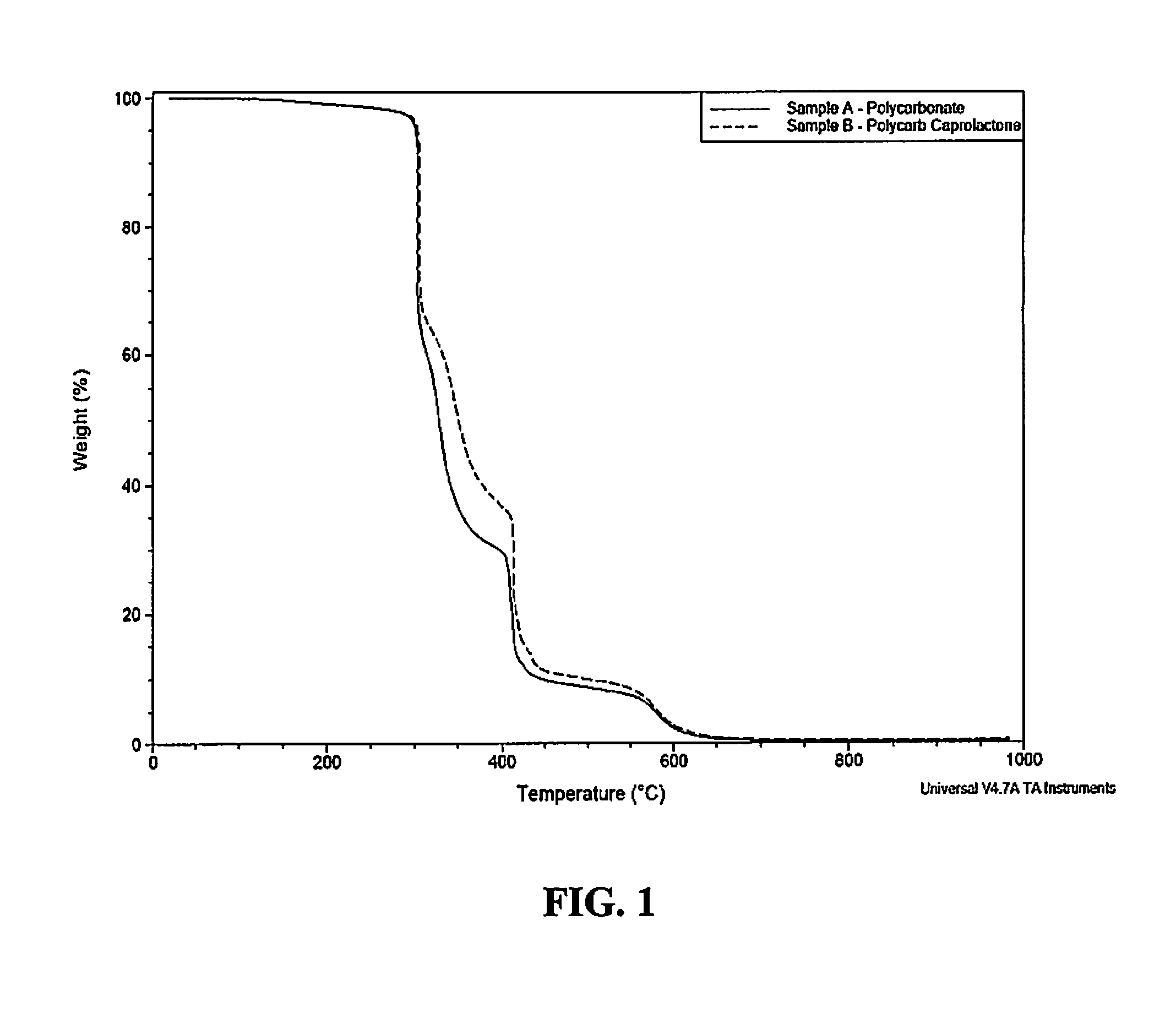High temperature resistance, radiation curable maskant for metal substrates
a radiation curable, maskant technology, applied in the direction of coatings, molten spray coatings, temporary coatings, etc., can solve the problems of inability to withstand the high temperature of inability to heat up plasma spraying for extended periods of tim
- Summary
- Abstract
- Description
- Claims
- Application Information
AI Technical Summary
Benefits of technology
Problems solved by technology
Method used
Image
Examples
examples
Test Methods
Tensile Test
[0051]Samples of the dimensions of films cured under a metal halide lamp at 250 mW / cm2 for 30 sec in a Teflon mold 3″(76 mm) long, 0.75″(19 mm) wide and 0.04″(1 mm) deep. Samples were then placed in an oven at 500° F. (260° C.) for 20 minutes, removed and allowed to cool to room temperature. Heat treated and non-heat treated samples were then pulled on an Instron Model 4467 on a 200 lb load cell at a speed of 1″ / min. Tensile at break (psi), elongation at break and Young's modulus (psi) were recorded.
Peel Test
[0052]Samples were prepared by casting 0.04″(1 mm) thick and 0.87″(22 mm) wide maskants onto a nickel alloy substrate and curing for 30 seconds under a metal halide lamp at 250 mW / cm2. Samples were then placed in an oven at 500° F. (260° C.) for 20 minutes, removed and allowed to cool to room temperature. Heat treated and non-heat treated samples were then pulled at 90° using a Thwing-Albert peel tester (Model FP-2255 with a 10 kg load cell) at a speed of...
PUM
| Property | Measurement | Unit |
|---|---|---|
| thickness | aaaaa | aaaaa |
| temperature | aaaaa | aaaaa |
| temperatures | aaaaa | aaaaa |
Abstract
Description
Claims
Application Information
 Login to View More
Login to View More - R&D
- Intellectual Property
- Life Sciences
- Materials
- Tech Scout
- Unparalleled Data Quality
- Higher Quality Content
- 60% Fewer Hallucinations
Browse by: Latest US Patents, China's latest patents, Technical Efficacy Thesaurus, Application Domain, Technology Topic, Popular Technical Reports.
© 2025 PatSnap. All rights reserved.Legal|Privacy policy|Modern Slavery Act Transparency Statement|Sitemap|About US| Contact US: help@patsnap.com



